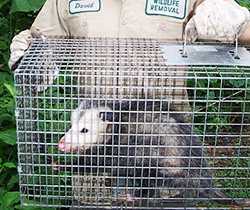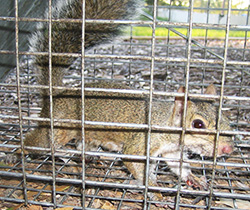- gilroy@aaanimalcontrol.com
Call 24/7 for a free quote:
669-253-2960
Gilroy Wildlife Control / California Animal Removal
Norcal Wildlife Removal - Animal Pest Control in Gilroy, CA. Call us: 669-253-2960

- Noises in Your Attic?
- Unwanted Wildlife?
- Bird or Bat Problem?
- Rodent Infestation?
- We Can Solve It!
Please, no calls about DOG or CAT problems. Call animal services: (408) 686-3900.
 Servicing all of San Francisco, San Mateo and Santa Clara Counties. Including Atherton, Belmont, Brisbane, Burlingame, Colma, Daly City, East Palo Alto, Foster City, Halfmoon Bay, Hillsborough, Menlo Park, Millbrae, Pacifica, Portola Valley, Redwood City, San Bruno, San Carlos, San Mateo, South San Francisco, Woodside, Palo Alto, San Jose, Santa Clara, Los Gatos, Los Altos, Campbell, Cupertino, Sunnyvale, Mountain View, Morgan Hill, Gilroy, San Francisco and all other unincorporated communites in the SF, SM, SC county area.
Servicing all of San Francisco, San Mateo and Santa Clara Counties. Including Atherton, Belmont, Brisbane, Burlingame, Colma, Daly City, East Palo Alto, Foster City, Halfmoon Bay, Hillsborough, Menlo Park, Millbrae, Pacifica, Portola Valley, Redwood City, San Bruno, San Carlos, San Mateo, South San Francisco, Woodside, Palo Alto, San Jose, Santa Clara, Los Gatos, Los Altos, Campbell, Cupertino, Sunnyvale, Mountain View, Morgan Hill, Gilroy, San Francisco and all other unincorporated communites in the SF, SM, SC county area.
 Norcal Wildlife Removal provides professional wildlife control for both residential & commercial customers in the
city of Gilroy in California. We offer custom animal control solutions for almost any type of wildlife problem, whether
it be the noises of squirrels running through the attic, a colony of bats living in a building, animals digging in your yard, or
the destructive behavior of a raccoon or other critter, we have the experience and the tools to quickly and professionally
solve your problem. For a consultation and price quote, give us a call at 669-253-2960
Norcal Wildlife Removal provides professional wildlife control for both residential & commercial customers in the
city of Gilroy in California. We offer custom animal control solutions for almost any type of wildlife problem, whether
it be the noises of squirrels running through the attic, a colony of bats living in a building, animals digging in your yard, or
the destructive behavior of a raccoon or other critter, we have the experience and the tools to quickly and professionally
solve your problem. For a consultation and price quote, give us a call at 669-253-2960
Click here to check our prices updated for year 2024. There are many Gilroy pest control companies for animals out there, but not all of them are licensed and insured professionals. Make sure that you hire a competent expert for your Gilroy exterminator of wildlife. At Norcal Wildlife Removal, we will be courteous and friendly and take the time to answer your questions. Give our Gilroy trappers at Norcal Wildlife Removal a call, and we will listen to your problem, and make an appointment to perform an inspection. Feel free to email us at gilroy@aaanimalcontrol.com
 Resources for free wildlife removal in Gilroy
Resources for free wildlife removal in Gilroy
If you can't afford our pro wildlife work, you can try these agencies for free wildlife removal:
Santa Clara County Animal Services: (408) 686-3900
California Wildlife Commission: 916-358-2790
Gilroy Police Department: Call your local police, they sometimes help.
These agencies will only help with certain types of wildlife problems, and they are not always consistent. If you want a high quality of
help done right, call our company.
 California is full of wildlife, including snakes, squirrels, raccoons, skunks, opossums, and more. Wildlife removal is a complex field. I
recommend professional Gilroy wildlife control services if you want to solve a critter problem legally and correctly. For example, we specialize in animals in the attic, which have broken into the house
and almost always have a nest of baby animals. It is necessary to perform correct
preventative repairs to keep pest animals a out of your house for good. We perform full building inspection, do the
the repairs and we also offer attic decontamination if necessary. Rats and mice love to live in attics, and can chew wires or leave droppings. Some Gilroy animals
frequently enter homes, and correct removal is not a simple task.
California is full of wildlife, including snakes, squirrels, raccoons, skunks, opossums, and more. Wildlife removal is a complex field. I
recommend professional Gilroy wildlife control services if you want to solve a critter problem legally and correctly. For example, we specialize in animals in the attic, which have broken into the house
and almost always have a nest of baby animals. It is necessary to perform correct
preventative repairs to keep pest animals a out of your house for good. We perform full building inspection, do the
the repairs and we also offer attic decontamination if necessary. Rats and mice love to live in attics, and can chew wires or leave droppings. Some Gilroy animals
frequently enter homes, and correct removal is not a simple task.
 DOG or CAT: If you need assistance with a domestic animal, such as a dog or a cat, you need to call your local
Santa Clara County Animal Control
for assistance. They can help you out with issues such as stray dogs, stray cats, vaccinations, licenses,
pet adoption, lost pets, and more. If you have a wildlife problem, you can try calling the Santa Clara County animal control, and see what they have to
say, but they will certainly not help you with a complex wildlife problem such as critters in your attic. They are a free government agency that
helps with dog and cat issues only.
DOG or CAT: If you need assistance with a domestic animal, such as a dog or a cat, you need to call your local
Santa Clara County Animal Control
for assistance. They can help you out with issues such as stray dogs, stray cats, vaccinations, licenses,
pet adoption, lost pets, and more. If you have a wildlife problem, you can try calling the Santa Clara County animal control, and see what they have to
say, but they will certainly not help you with a complex wildlife problem such as critters in your attic. They are a free government agency that
helps with dog and cat issues only.
Santa Clara County Animal Services: (408) 686-3900
Gilroy Wildlife Tip:
How to catch flying squirrels in attic -To learn how to catch flying squirrels in the attic, you can do your research on the Internet. You will find a distinct difference between reputable sites and those created by do-it-yourselfers and businessmen. First, ignore any site that recommends the use of poison inside of a home for rats or flying squirrels. Poisoning flying squirrels is a bad idea. Not only do the animals rarely eat the poison, those that do will wander into the walls of your home where they will eventually die. Dead flying squirrels in the walls mean a foul smell throughout the home. To get rid of the smell, you have to find the bodies. You should also avoid sites that talk up the use of mothballs, peppermint oils, sulfur bombs, and predator urine sprays. These repellents do not work, and a site that is based off of experience and professional use will not recommend them. If you're lucky, the website you visit may even have a directory of local experts. These people can be called and asked for input. You may even find that their fees for service is not unreasonable when you look at the time and effort required from proper squirrel catching methods.
Gilroy, CA Animal Control News Clip:
Mole- The North American majesty - Mole is a small yet quite studious animal when it comes to tackling its predator. Its face is subject to quite salient features which makes it quite distinct from other mammals in the region of North America.
Appearance: Mole's face is a triangular, pointed upwards one. The eyes are so small that they hardly come to the vision of a naked eye. Same goes for its ears. Over the past few decades there were false notions that these animals are without the two foremost and essential sensory organs. However researches with the aid of advanced medical science have proven there is indeed the presence of both the organs, albeit too tiny. The vision might not be as effectual but is considerably powerful to ensure their survival in the world of hazardous predators. The fur could vary from one mole to another, but the core color them is grey to black. The size is a smaller one- six to eight inches to be precise.
Biology: Due to human intervention in the ecosystem the conservation status of moles is an alarming one, labeled as 'threatened'. They come from a genus biologically known as Talpidae. It is also renowned with it's 'class' or rather the infraclass, Eutheria.
Lifecycle: The reproduction patterns of moles are still in constant examination. Usually it lasts for about three to four months a year. Male moles approach the females while they are 'residing' in their dens. A typical female mole gives birth to about half a dozen offspring at an instance. The weaning moment comes in few weeks. As far as the life expectancy of moles is concerned, the estimates suggest that it ranges from four to five years. While in captivity this could to seven to eight years. Moles spend substantial amount of the daytime while sleeping.
Habitat: Unlike most other mammals, moles prefer to live in areas which are devoid from all kinds of moisture. This ensures their best survival and proper breeding ground. Sandy areas are expected to be inhibited by the moles. Soil, not marshy though also attracts them. They are not found in areas near large water bodies. Forests are also not a good option for their habitat.
Diet: Moles are considered as lethargic and for the same reason their feeding is not as strong. Although it uses up quite a large portion of day finding the food, the consumed energy is not much large by any means. It usually restricts it diet to insects, and hence termed as 'carnivorous'. Flies, beetles, grasshoppers, mosquitoes etc makes a good meal for an adult mole.
Behavior: Moles are regarded considerably social when it comes to sharing their living place and food. This collaboration with mates also comes good at mating, and finding partners for mating. Although they are not very vigilant and remains lethargic all throughout the year, it is the winter season when they are most active. This might seem to be quite bizarre, but research on their body metabolism has indicated that their body is adaptive to cold in far more effectual manner. Astounding, isn't it?
We are Gilroy wildlife management experts, and are familiar with all the pest animals, including all species of California snakes and
bats. We at Norcal Wildlife Removal are the best among Gilroy nuisance wildlife companies and can solve all animal damage issues. Our wildlife operators are skilled at bird control and
bat removal, and would be happy to serve your Gilroy bat control or pigeon and bird control needs with a professional solution. Opossums, skunks, moles, and other animals
that can damage your lawn - we are the exterminators who can capture and remove them. Our specialty is removal of animals in homes such as raccoons in the attic or squirrels in the attic.
Our professional pest management of wildlife and animals can solve all of your Gilroy
critter capture and control needs. Give us a call at 669-253-2960 for a price quote and more information.
If you have any questions about a wildlife problem in Gilroy, or wildlife removal in Santa Clara County, please give Norcal Wildlife Removal a call at 669-253-2960, and we will listen to your problem, give you a price quote, and
schedule an appointment, usually same day or next day, to solve the problem.


















